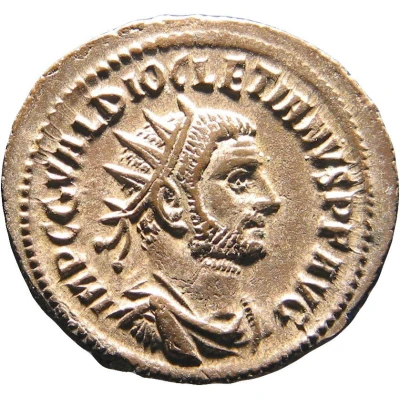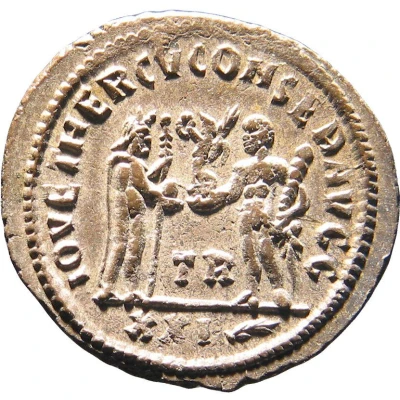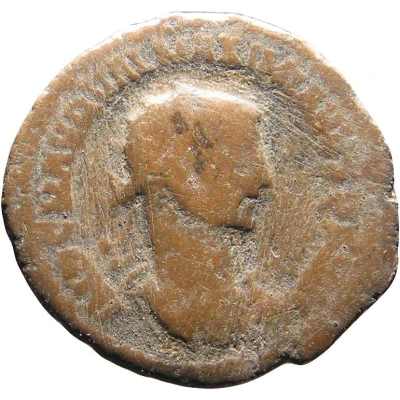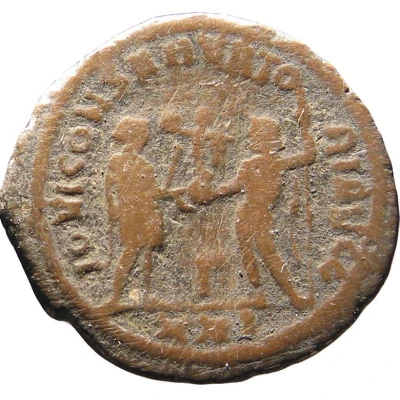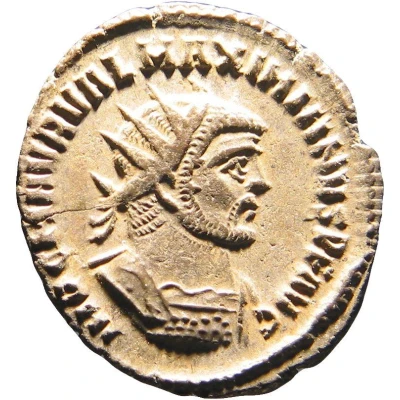
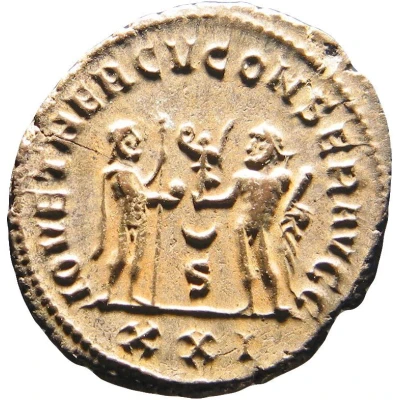

© American Numismatic Society (ANS)
Antoninianus - Maximianus IOV ET HERCV CONSER AVGG; Jupiter
| Silver | 3.9 g | 21.5 mm |
| Issuer | Rome › Roman Empire (27 BC - 395 AD) |
|---|---|
| Emperor | Maximian Herculius (Marcus Aurelius Valerius Maximianus) (286-305) Diocletian (Gaius Aurelius Valerius Diocletianus) (284-305) |
| Type | Standard circulation coin |
| Years | 285-295 |
| Value | Antoninianus (1) |
| Currency | Antoninianus, Reform of Caracalla (AD 215 – 301) |
| Composition | Silver |
| Weight | 3.9 g |
| Diameter | 21.5 mm |
| Shape | Round (irregular) |
| Technique | Hammered |
| Orientation | Variable alignment ↺ |
| Demonetized | Yes |
| Updated | 2024-10-05 |
| Numista | N#306671 |
|---|---|
| Rarity index | 82% |
Reverse
Jupiter, standing right, holding globe in right hand and sceptre in left hand, facing Hercules, standing left, holding club and lion's skin.
Symbol and letter in centre field.
Value mark in exergue.
Script: Latin
Lettering: IOV ET HERCV CONSER AVGG
Unabridged legend: Iovi Et Herculi Conservatori Duorum Augustorum.
Translation: To Jupiter and Hercules, protectors of the two emperors (Augusti).
Comment
Mass varies: 2.97–4.83 g;Diameter varies: 20.5–23.5 mm;
Example of this type:
American Numismatic Society (ANS)
Source:
Online Coins of the Roman Empire (OCRE)
Interesting fact
One interesting fact about this coin is that it features an image of Jupiter, the Roman god of thunder, on one side, while the other side bears the image of the Roman emperor Maximianus (also known as Maximian) and the inscription "IOV ET HERCV CONSER AVGG," which translates to "Jupiter and Hercules, protectors of the emperors." This coin was minted during a time when the Roman Empire was facing numerous challenges, including external threats and internal political instability, and the image of Jupiter and Hercules was likely intended to convey a sense of strength and protection.
